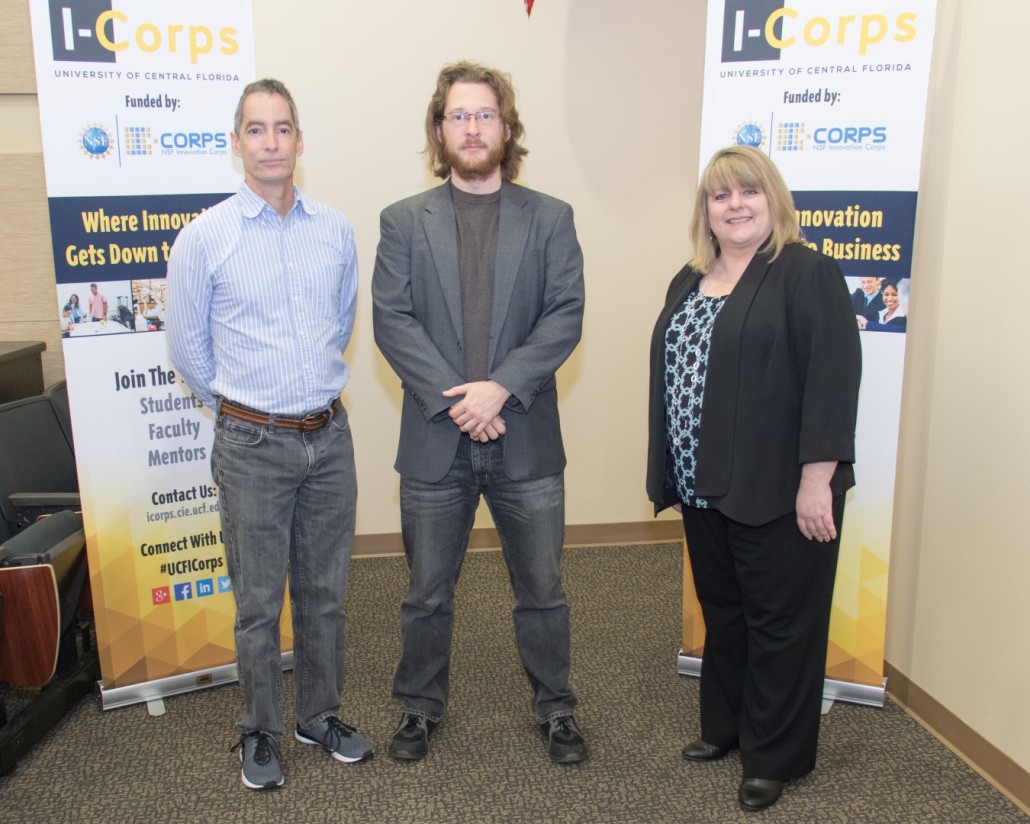Thor ORE Team
Technology turns radioactive material into commercially viable products
Mining can be a dirty business, particularly when you consider its waste. Phosphogypsum is one of them, and it’s deemed radioactive. Stacks 200 feet tall are piled to contain this hazardous waste material on land away from the public, using up valuable land and critical resources while it waits to be utilized.
Members of an I-Corps team at UCF are developing an alternative to simply storing all that waste. Thor ORE, a mineral extraction startup, is developing technology to extract Rare Earth Elements, Uranium and Thorium, leaving behind useable phosphogypsum and several usable byproducts that are classified as critical materials for the U.S.
“This technology, which has the potential to extract valuable material from this waste, is useful on so many levels,” said Dylan Weitzman, the team’s chief research officer of Thor ORE and a physics student at UCF. “Not only are we taking radioactive materials out of the equation, but we’re also converting waste into a valuable resource that will benefit both government and commercial industries.”
Other members of the team are Melanie Beazley, Ph.D., a UCF assistant professor of Chemistry and the team’s Academic Lead; Glenn Wagner, co-founder of Thor ORE and chief executive officer; and Kevin Pope, director of scientific services at Pope Environmental, the team’s Business Mentor.
The potential for this technology is massive, if only in terms of reducing the volume of phosphogypsum produced. Central Florida alone produces over 30 MTY of phosphogypsum which adds to the 1.5 billion tons of phosphogypsum currently stockpiled. Worldwide, that number exceeds 180-230 MTY, with 7 billion tons already in existence.
Among the materials that this technology is meant to extract are Rare Earth Elements (REE), Uranium, and Thorium. The U.S. is heavily dependent upon China’s Rare Earths since they control over 97 percent of the market. Creating a stable supply of REE in the U.S. would positively affect over 440 industries, $329 billion in revenue, and over 600,000 jobs in North America. Demand for Uranium is two times greater than the supply and with several countries like China and Morocco increasing their nuclear energy infrastructure a need for Uranium supply will grow. Fortunately, phosphate comprises 88 percent of the world’s unconventional Uranium reserves.
“The basis for the science and technology behind this process derives from existing technology in other industries that is being modified to meet our R&D objectives,” said Weitzman.
Mining companies are acquiring similar companies and technology for other industrial mining applications. That fact alone gives the team a great deal of competitive advantage in the marketplace.
“This technology addresses a number of global issues,” said Weitzman. “Currently, the phosphogypsum in Central Florida carries with it a number of serious problems. There’s a danger of waste leaching into aquifers and critical resources not being used to their full potential. The land where this material is stored becomes unusable as well. Our work is aimed at diminishing these problems and making a better world.”



